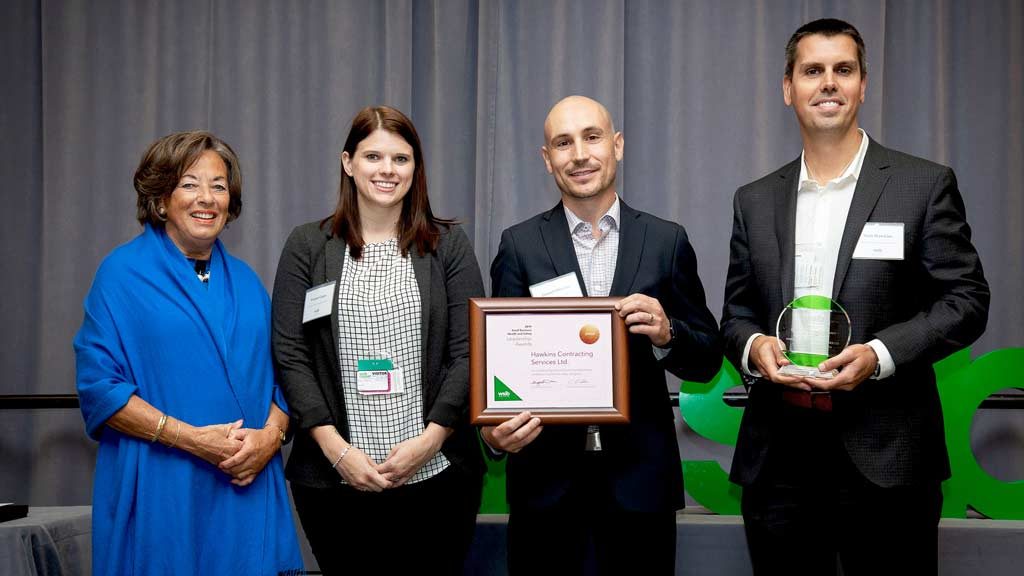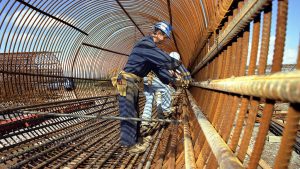Workplace Safety and Insurance Board (WSIB) premium rates will continue to drop for the construction sector next year but the bigger story for builders will be familiarizing themselves with the WSIB’s new rate framework system and learning how to use it to their advantage.
That was the analysis of construction stakeholders attending the WSIB’s annual general meeting in Toronto Sept. 25. With last year’s announcement that the WSIB’s unfunded liability (UFL) was eliminated almost 10 years ahead of the original target date, this year the agency was able to axe the Past Claims Component of the premium rates for next year and announce a reduction to the average premium of 17 per cent. That’s a savings of $607 million for Ontario employers, with three of every four businesses paying less.
Most firms in the construction sector should see lower rates, said David Frame, director of government relations for the Ontario General Contractors Association, although sector-specific numbers have not yet been released.
“Overwhelmingly it should be lower than the number that they are paying today,” said Frame of the proposed 2020 premium rates.
Employers will soon be mailed packages outlining their new rates as well as details of the new rate framework system. Effective Jan. 1, 2020, the WSIB is moving from its current 70-year-old classification structure to the North American Industry Classification System, which streamlines employer classifications from 155 rate groups to 34 classes and subclasses. There will be five construction classes: Building; Infrastructure; Foundation, Structure and Building Exterior; Building Equipment; and Specialty Trades.
Board chair Elizabeth Witmer told the stakeholders the new system would level the industry playing field, increase transparency and promote health and safety.
WSIB president and CEO Tom Teahen later explained, “We needed to update the structure to better reflect risk, to better reflect the employer’s business activity and make it easier for employers to understand. We went through a long consultation program to get to the point we are today.”
There are several ways the new system will provide incentives for employers to improve health and safety practices. For those firms faced with future premium increases, the hikes will be delayed until 2022 to enable them to strive for better performance, Teahen said. And there will be a new program called the Health and Safety Excellence Program launched in November that will be linked to the new rate framework system and streamlines health and safety incentive programming for businesses.
Frame explained the new excellence program replaces current employer incentive programs such as the Merit Adjusted Premium (MAP) plan. Both he and Carmine Tiano, director for occupational health services at the Ontario Building Trades and a long-time critic of some WSIB practices, praised the new system.
“We are supportive of that,” said Frame. “With the retirement of the old system you are losing health and safety plans, Cad 7, NEER and MAP, which are all important incentive programs, so you need to replace them.
“So, they are coming up with the new excellence program and I am sure our members will take advantage of it. In particular it’s for firms who would like to be accredited but need to put an investment into health and safety. It gives them a roadmap to get there and it gives a financial incentive to get there.”
Commented Tiano, “I was happy to see that the WSIB is going to get re-engaged in health and safety at the employer level. I know a lot of people in their health and safety program and they are great people, so that is going to be a great thing.”
Tiano recalled that at the time of last year’s annual meeting, when it was announced the UFL was eliminated and premiums would drop by $1.45 billion for 2019, the Building Trades had argued employers were profiting at the expense of workers. But now, he said, it’s time for stakeholders to look to the future and help improve the system.
“I am not going to say they paid it off on the backs of injured workers,” said Tiano. “That is the past, let’s look to the future.
“Now, going forward, let’s see what the employer community does on health and safety. My concern is, have we given enough incentives to employers.”
The Building Trades released a document on Sept. 23 authored by Tiano with recommendations on developing a national safety strategy. In a section on the WSIB, Tiano wrote, “It is our position that most employers have been more interested in maximizing their potential experience rating rebate and, in turn, have diverted resources to seek immediate gains through claims management strategies, rather than by investing in long-term prevention.”
Tiano said improvements could include an Alberta-style modified work claim rate and also a disability claim rate.
“Everything that Mr. Teahan said, I am in agreement with him,” said Tiano, referring to getting injured workers back to work. “The WSIB has done a good job on retraining. My only concern is, if they can move to a more worker-centric approach, that would be good.”
Council of Ontario Construction Associations president Ian Cunningham also had praise for the reform path of the WSIB under Teahen.
“It has the makings of a business school case study,” said Cunningham, noting that the UFL had reached $14 billion in 2011. “It has been a remarkable turnaround. This year’s annual meeting story is a continuation of the good news from last year when the UFL was eliminated.”
Removing the Past Claims Component would enable construction employers to hire more people, invest in new equipment and keep the economy growing, said Cunningham.
Follow Don Wall on Twitter @DonWall_DCN.










Recent Comments
comments for this post are closed